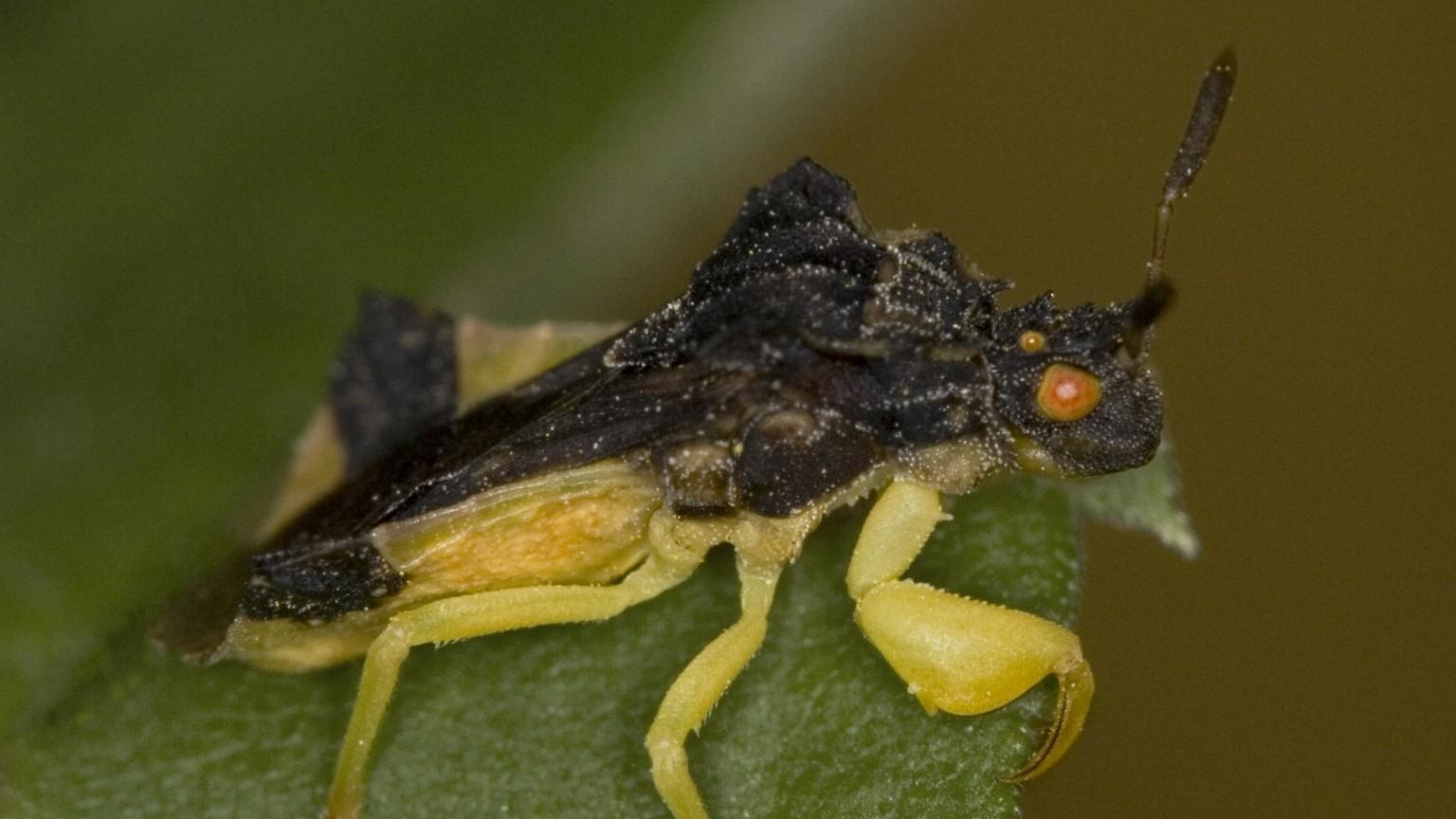About ambush bugs
-
Ambush bugs are smaller, heavier-bodied cousins to assassin bugs, but instead of stalking other insects they wait motionless for their prey to wander near.
-
Woe to the insect that gets within reach! The ambush bug will suddenly seize it in powerful raptorial (prey-grabbing) forelegs and quickly dispatch it with a stab from its sharp beak.
-
Ambush bugs tend to be brightly colored, blending in with the flowers where they hide, waiting for visiting insects.
-
There are about 300 known species, which most often overwinter as adults.
Important species in Maryland: Jagged ambush bugs, other Phymata spp.
Life stage(s) that feed on pests: Nymphs and adults.
Insect(s) fed on: Flies, caterpillars, beetles, wasps, bees, many flying insects often larger than themselves.
Appearance of ambush bugs
Nymphs: Resemble smaller, wingless adults.
Adults: Shorter (up to 3/5” long), broader, and stouter than assassin bugs, ambush bugs also have a shorter head and lack a distinct “neck”, but do have a long beak carried back beneath the body. Ambush bugs have thickened forelegs, shaped somewhat like those of praying mantises. May be dark colored, but often creamy, or bright yellow, red, or green, with patterns that provide camouflage against the flowers on which they hide.
Where to find: On flowers and wildflowers, favoring yellow and white flower heads. Greater numbers are found later in the season, when they are especially common on golden rod.
How to attract and conserve: Cultivate flowering plants to provide their preferred hunting grounds. Avoid use of broad spectrum insecticides.
